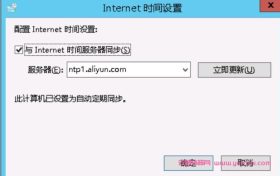centos7防火墙如何操作?centos7防火墙么查看状态,以及开启、关闭、重启防火墙乖行。firewall-cmd 是 firewalld 的主要命令行工具。它可用于获取有关 firewalld 的状态信息,获取运行时和永久环境的防火墙配置以及更改这些配置。

一、查看防火墙
1.查看防火墙此时运行状态。方式有两种具体如下:
[root@localhost student]# firewall-cmd --state
[root@localhost student]# systemctl status firewalld2.查看防火墙是否开机自启。
[root@localhost student]# systemctl is-enabled3.查看接口区域,这里以ens33为例。
[root@localhost student]# firewall-cmd --get-zone-of-interface=ens33
public4.查看绑定区域的接口。
[root@localhost student]# firewall-cmd --get-active-zones
docker
interfaces: docker0
public
interfaces: ens335.查看所有开放端口。
root@zq-virtual-machine:/home/zq# netstat -aptn二、开启/关闭/重启防火墙
2.1 开启防火墙
1.执行systemctl start firewalld.service命令开启防火墙,默认是开启的。
[root@localhost student]# systemctl start firewalld.service2.2 关闭防火墙
1.执行systemctl stop firewalld.service命令关闭防火墙。
[root@localhost student]# systemctl stop firewalld.service2.3 重启防火墙
1.执行systemctl restart firewalld.service命令重启防火墙。
[root@localhost student]# systemctl restart firewalld.service2.4 开机自启防火墙
1.执行systemctl enable firewalld.service命令设置防火墙开机自启。
[root@localhost student]# systemctl enable firewalld.service三、打开端口/服务
3.1 打开端口
临时打开端口
1.执行firewall-cmd –zone=public –add-port=80/tcp命令打开80/tcp。这里需要注意,这是临时的打开端口,重启后无效。
[root@localhost student]# firewall-cmd --zone=public --add-port=80/tcp2.执行systemctl restart firewalld.service命令重启防火墙。
[root@localhost student]# systemctl restart firewalld.service注意:当开放端口设置完成后必须要重启,否则不生效!!!
永久打开端口
1.执行firewall-cmd –permanent –zone=public –add-port=80/tcp命令永久打开80/tcp。
[root@localhost student]# firewall-cmd --permanent --zone=public --add-port=80/tcp2.执行systemctl restart firewalld.service命令重启防火墙。
[root@localhost student]# systemctl restart firewalld.service注意:当开放端口设置完成后必须要重启,否则不生效!!!
3.2 打开服务
临时打开服务
1.执行firewall-cmd –zone=public –add-service=http命令公共区域中临时打开服务HTTP。
[root@localhost student]# firewall-cmd --zone=public --add-service=http永久打开服务
1.执行firewall-cmd –permanent –zone=public –add-service=http命令公共区域中临时打开服务HTTP。
[root@localhost student]# firewall-cmd --permanent --zone=public --add-service=http 本文来源:https://www.yuntue.com/post/45348.html | 云服务器网,转载请注明出处!

 微信扫一扫打赏
微信扫一扫打赏
 支付宝扫一扫打赏
支付宝扫一扫打赏






